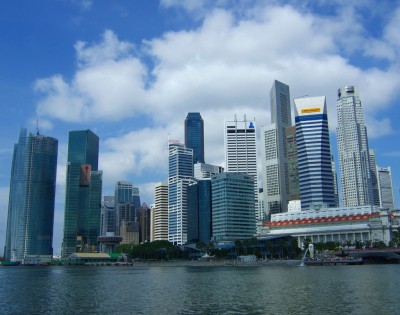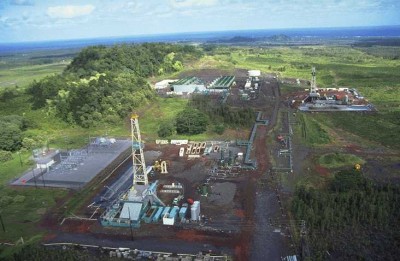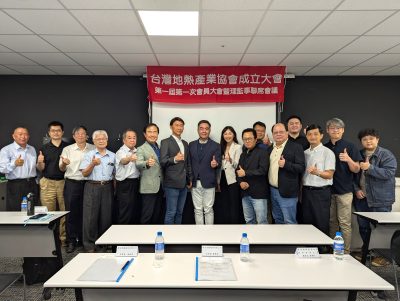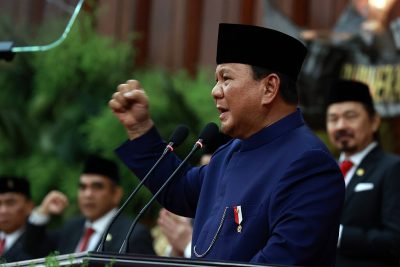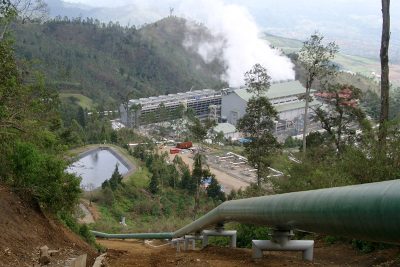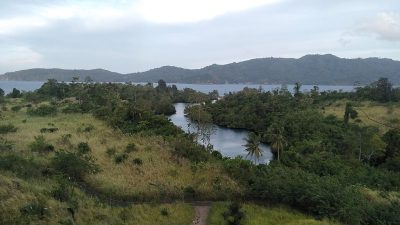Insights – why tariffs for geothermal remain key difficulty in Indonesia
In this opinion piece, a good insight is given on why tariffs and its approach remains a key challenge in pushing geothermal development in Indonesia.
In an opinion article, publised in Investor Daily, Komaidi Notonegoro, Executive Director of ReforMiner Institute and Lecturer of the Trisakti University Masters Program in Economics, gives a useful overview on how tariffs for geothermal remain a crucial difficult element in Indonesia drive to geothermal development. The following is a translation.
With its estimated geothermal resources of around 24,000 MW, Indonesia so far lags behind in utilising the resource potential for power generation with an installed power generation capacity of today around 2,130 MW, or only 8.9% of the total existing potential.
Regarding this potential, the geothermal industry is actually one that can accommodate the energy mix target set by the government.
Through the National Energy General Plan (RUEN) which is regulated in Presidential Decree No. 22/2017, the government sets the portion of new and renewable energy (EBT) in the national energy mix at least 23% in 2025 and a minimum of 31% in 2050. Despite the potential large, the development of the domestic geothermal industry can be said to be relatively inadequate.
Historically, exploitation of geothermal energy in Indonesia has actually been started since 1983 which was marked by the operation of PLTP Kamojang Unit 1 with a capacity of 30 MW. However, although it has been tried for about 37 years, the cumulative capacity of Indonesia’s geothermal power plant to date is only around 2,130.60 MW. This means that up to now, Indonesia has only produced an average PLTP capacity of around 57 MW for each year.
Meanwhile, on the other hand, during the last five years the capacity of power plants that use coal (PLTU) produced by Indonesia has increased by an average of 2,000 MW each year.
Based on the review, the domestic geothermal industry has not yet developed due to a number of obstacles. Some of them are because (1) it is difficult to make a buying and selling price agreement between geothermal developers and PLN; (2) the existing policy requires that the price of renewable energy electricity be competitive with fossil generators; (3) the number of financial institutions willing to provide loans during the exploration phase is still limited; (4) problematic permits because the working area is in a conservation forest, (5) high risk due to unclear certainty of reserve potential and steam quality; and (6) there are still many permits that must be fulfilled after the issuance of IUP for geothermal exploitation.
From a number of obstacles that exist, the common ground in the sale and purchase of steam and / or geothermal electricity between developers and PLN is the main cause of relatively slow domestic geothermal development.
In this case, in order for this to work, the developer expects that the selling price of steam and / or geothermal electricity is in accordance with the economics of the project.
Meanwhile, PLN, which has to strive for the BPP of electricity to be as efficient as possible, to stay within the limits and not exceed the electricity subsidy budget allocation set out in the APBN, it is relatively difficult to meet the demand for geothermal developers.
Regarding the existing problems, the sale and purchase of steam and / or geothermal electricity between the developer and PLN cannot be fully delegated through the business to business mechanism.
With the objective of making BPP efficiency, logically PLN would choose a source of electricity supply that is cheaper and certainly not geothermal. Meanwhile, developers cannot sell electricity at a price that is acceptable to PLN when that price is still below the economic value of the geothermal project itself.
Based on observations, the government has actually issued a number of regulations governing the buying and selling price of geothermal electricity.
Some of them are Permen ESDM No. 02/2011, Permen ESDM No. 17/2014, Permen ESDM No. 12/2017, Permen ESDM No. 43/2017, Permen ESDM No. 50/2017, and Permen ESDM No 53/2018.
Although using a different formulation, in principle, the geothermal power purchase price regulated in a number of regulations uses the same policy, namely the ceiling price or the highest benchmark price.
In Permen ESDM No. 50/2017 in conjunction with Permen ESDM No 53/2018 two pricing mechanisms are stipulated.
First, if the BPP for the generation of the local electricity system is above the average national BPP for generation, the price of electricity from PLTP is the highest as much as the BPP for the generation of the local electricity system.
Second, if the BPP for the generation of the local electricity system is equal to or below the average national BPP for generation, the price of electricity from PLTP is determined based on the agreement of the parties.
Based on the provisions of this regulation, the opportunities for the geothermal industry to develop will be even smaller. The regulation provides a limitation that the purchase price of geothermal electricity that can be made by PLN cannot exceed the average BPP in the electricity system where geothermal is cultivated.
Meanwhile, the opportunity for the selling price of geothermal electricity to be higher than the average BPP in the local electricity system is quite large. Especially if there are many power plants in the area that use fossil energy as the primary energy generation.
The opportunity that the selling price of geothermal electricity can be lower than the average BPP in the electricity system where geothermal is cultivated is still open. Especially in outermost, underdeveloped, and frontier areas which are generally still outside the reach of the main electricity system.
However, these areas are generally faced with the problem of relatively low demand for electricity which will have an impact on the economics of the geothermal projects that will be undertaken.
Observing these existing problems, the exploitation and development of domestic geothermal absolutely requires a strong commitment from the government. For the current condition, exploitation and development of national geothermal energy will be difficult if it is only left to the business to business mechanism.
Among the options available to increase the exploitation and development of the geothermal industry is that the government provides a subsidy to PLN so that it can buy geothermal electricity according to the economics of the geothermal project.
Or provide a number of investment and tax incentives so that the economics of geothermal projects are included in the electricity purchase price range by PLN.
Source: InvestorDaily






